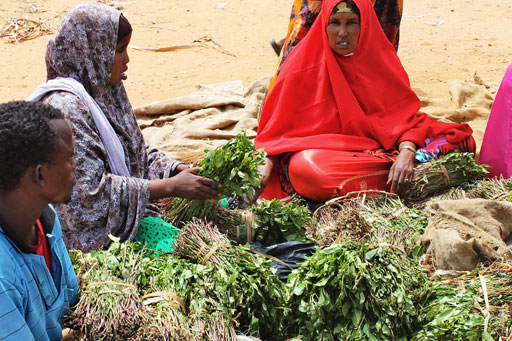A new study has concluded that chewing of miraa results in poor academic performance. The study by Hawasa University in Ethiopia, which is published in the current issue of the journal African Health Sciences, was conducted in the miraa-growing area of Sidama in the southern part of the country. African Health Sciences is an international refereed journal supported by the US National Institutes of Health.
he findings come four months after Kenyan researchers surprised the scientific community by declaring miraa safe for human consumption. They also come at a time when the Government has written to the United Nations over Europe’s decision to ban the stimulant from its market.
performance By Gatonye Gathura | Updated Fri, June 30th 2017 at 00:00 GMT +3 SHARE THIS ARTICLE Share on Facebook Share on Twitter Meru Governor Peter Munya chews miraa in Ntonyiri, Igembe North on June 8. A new study indicates miraa leads to poor academic performance. [Mose Sammy,
Standard] A new study has concluded that chewing of miraa results in poor academic performance. The study by Hawasa University in Ethiopia, which is published in the current issue of the journal African Health Sciences, was conducted in the miraa-growing area of Sidama in the southern part of the country.
African Health Sciences is an international refereed journal supported by the US National Institutes of Health. The findings come four months after Kenyan researchers surprised the scientific community by declaring miraa safe for human consumption.
They also come at a time when the Government has written to the United Nations over Europe’s decision to ban the stimulant from its market. Drug trade ALSO READ: We’ll cushion you from losses, NASA tells miraa farmers Kenya uses a yet-to-be-published Government-initiated study at the Kenya Medical Research Institute (Kemri) to vouch for the safety of the commodity.
At an in-house conference in February, Kemri, citing the two-year study in Embu and Meru, declared miraa safe for human consumption. Buoyed by these findings,
Agriculture Cabinet Secretary Willy Bett recently told miraa farmers that the Government had petitioned the United Nations over the European ban of miraa. Kenya, he said, was seeking an interpretation of a convention on drug trade that European nations had used to ban the exports. “If the interpretation favours Kenya that miraa is not a psychotic drug, then the Government will ask these countries to remove the restrictions,” Mr Bett told miraafarmers in Nyambene. If the UN takes up the Kenyan petition, it may establish a technical panel to study available scientific data and make a decision in favour or against miraa.
The Ethiopian study could very well be part of the documents to be perused.
The study, covering 1,558 secondary school students, found that 14.6 per cent of them heavily used miraa. Stay awake Students chewing miraa, the researchers said, were more likely to fail in their studies, in most cases scoring less than 50 per cent. “The likelihood of performing poorly or failing in academics is two times higher for those students who were using khat than those who were not chewing khat,” says the study.
This is interesting considering that the students said they chewed miraa to stay awake and get energised to study.
The Ethiopian findings are similar to those of another study in Saudi Arabia which also found that miraa chewing affects academic performance.
The research also links its findings to previous laboratory work at the University of Minnesota, US, which showed chronic use of khat to have long term effects on human memory.
ALSO READ: Governor Munya demands space for miraa at Isiolo Airport Kemri researchers have argued that the miraa grown in Meru and Embu may not have similar effects with the others grown elsewhere. Interestingly, several studies conducted in Kenya universities in Kenya also linked local miraa to poor academic performance.
A 2013 unpublished study by Daniel JN Ngeranwa of Kenyatta University found worrying levels of khat-chewing among upper primary pupils in Gachoka sub-county in Embu.
The results revealed about 10 per cent of pupils in Kianjiru zone chewed miraa.
The study said it impacted negatively on educational performance of the pupils where the boys were more adversely affected than the girls.
An earlier study by Samuel Thuo Kimani of the University of Nairobi and published in the journal Behavioural Brain Research showed khat has serious negative effects on learning and memory when fed on experimental mice.
The chemical cathinone in khat, the Kimani study argued, works through the same mechanism as the powerful stimulant called amphetamine to impair learning and memory. Cathinone acts like amphetamine, a major reason why miraa has been banned in Europe.
Discover more from Idil News
Subscribe to get the latest posts sent to your email.


